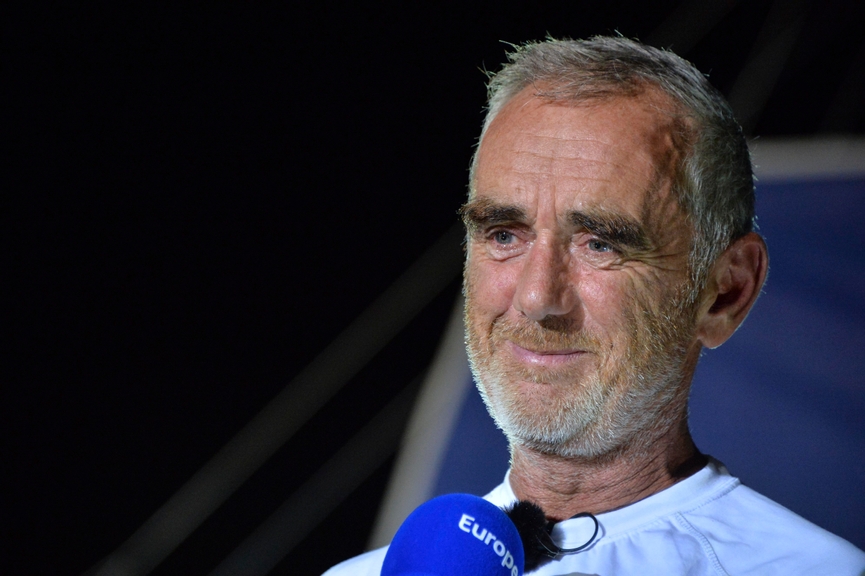Loïck Peyron: “More action, more battles, more suspense!”

From 1985 to 1999, Loïck Peyron claimed victory five times in the Course de l’Europe, a race that The Ocean Race Europe now follows in the footsteps of. He shares his memories, his love for this itinerant race, and his secrets to winning. The sailor also reflects on this new version of The Ocean Race and says he is impressed by the level of the skippers taking part.
Will you be following The Ocean Race Europe?
“Of course, I follow everything that sails—closely or from afar! And I especially enjoy team racing, even more so on the IMOCAs. What’s great about The Ocean Race and The Ocean Race Europe is that we get to see footage from onboard, the atmosphere inside and outside the boat. The immersion is deeper, more intense. Also, races with stopovers always guarantee more battles. With seven boats entered, there’s bound to be some!”
Do stopover races enhance that feeling of ‘battle’?
“Absolutely. They’re often more animated races with greater suspense. After each stopover, you have to start over, question yourself again. In a non-stop race, weather systems and strategic choices can sometimes decide everything quite early on…”
“Back then, we did everything without engines!”
You raced in the Course de l’Europe five times. Do you remember how it all began?
“It all started with two men: Gérard Petitpas and Jacques Delors, who was then President of the European Commission. I don’t have a very precise memory of how the race was created. But I do remember the delivery trip: we left from Kiel, stopped in northern Denmark. At the time, we did everything without engines, sailing alone from stopover to stopover, with no support. And these were big boats!”
You won it five times… What was the key to that success?
“The first time, I had a small 40-foot catamaran (Lada Poch), and after that the trimaran Fujicolor II. It was designed by Nigel Irens, and I was lucky to have a great crew every time. Above all, we constantly worked to improve the boat. There were small upgrades and bigger innovations: we were the first to install a canting mast on an Orma trimaran. The competition was tough—with Alain Gautier, Franck Cammas and especially Laurent Bourgnon.”
“The skippers in The Ocean Race Europe are incredibly strong!”

You’re all used to sailing around the world. How does it feel to sail around Europe?
“The symbolism is strong: no matter what one’s view of the European Union might be, the idea of connecting countries on the same continent is a beautiful one. We also had some stunning stopovers: a majestic start from Venice, another from Porto Cervo (Sardinia), plus stops in Malta, Casablanca… It also helped grow interest in sailing in the North—Sweden, Finland, Denmark. In fact, it contributed to the emergence of a new circuit, the Nokia Oops Cup, when the Orma class was winding down in France.”
This is the second edition of The Ocean Race Europe. What do you think of the skippers taking part?
“They’re all very strong! The level is really exceptional—there’s an incredible degree of technical and tactical mastery among the top skippers. There’s a good chance The Ocean Race Europe will be a constant battle. What’s great too is seeing more and more young women sailing at a very high level. Yes, female presence is now a requirement, but it’s helping more women rise to the top. It’s a truly positive development.”
You mentioned the intense onboard images… Is the presence of OBRs a good thing?
“Absolutely - it changed everything! It’s a great idea: when there are no OBRs, it’s frustrating to follow a race and see so few images of life onboard or of the manoeuvres. Suddenly, it becomes incredibly spectacular and you can really feel the physical effort. It brings the human element back into racing, which is essential now that we don’t see crews on deck anymore with these modern boats. It allows us to dive even deeper into the race—and that’s something to celebrate!”